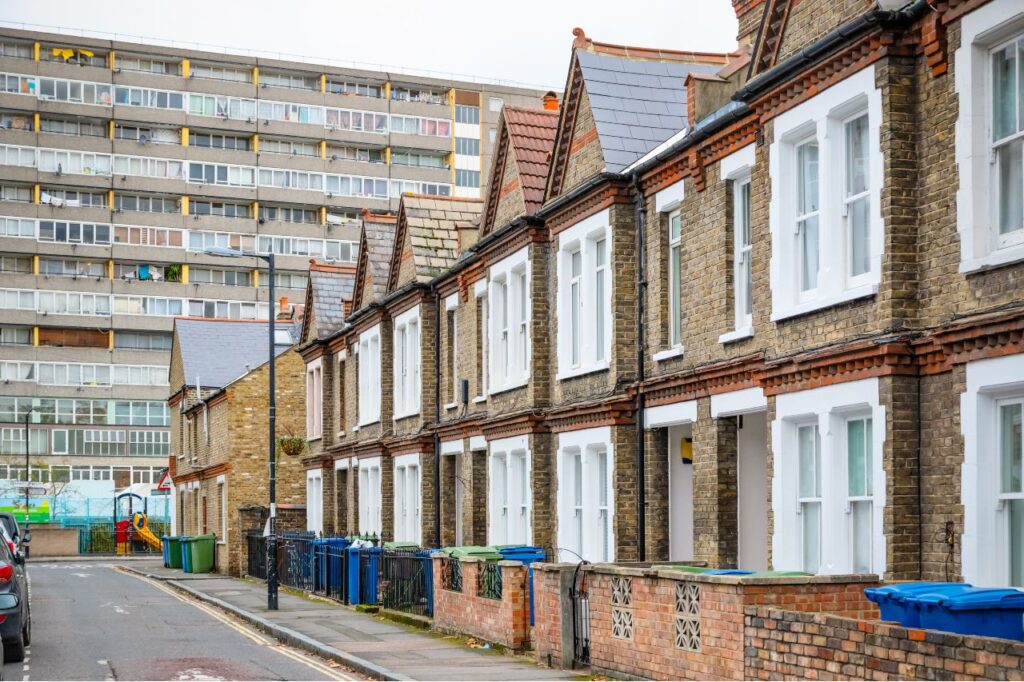London is known for its rich history, diverse culture, and iconic landmarks. However, beneath the glamour and allure of the capital lies a housing crisis that continues to plague council tenants, particularly in council houses and council flats.
Dampness in these social housing units has been a persistent issue, negatively impacting the lives of thousands of residents. We will explore the problems faced by council tenants due to damp issues in London, compare the differences between council houses and council flats, and discuss how the issue of damp has evolved over the past decade.
View Article: Why do London Homes Have Damp Problems

We will also delve into the challenges and responsibilities associated with tackling damp problems in social housing units and the accountability of building owners and landlords.
The Plight of Council Tenants in London
Dampness in council houses and council flats has been a recurring nightmare for many Londoners. It’s not just an inconvenience; it’s a severe health hazard. Damp conditions can lead to respiratory problems, allergies, and mould-related issues, making the problem a significant public health concern. The tenants, often with limited resources, are caught in a seemingly endless cycle of seeking relief from damp problems.
Council Houses vs. Council Flats: Key Differences
Council houses and council flats are two common types of social housing in London, and they differ in various ways:
- Structure: Council houses are typically standalone, semi-detached, or terraced homes with gardens, while council flats are multi-unit buildings with individual apartments.
- Space: Council houses tend to offer more living space and outdoor areas, making them suitable for families. Council flats are often smaller, making them more suitable for individuals or smaller households.
- Maintenance: The responsibility for maintenance and repairs may vary between council houses and council flats, with landlords generally responsible for repairs in flats, while tenants may have more responsibility for houses.
- Cost: Rent for council houses and council flats varies depending on location, size, and the level of demand in the area.
Comparing Damp problems between Council Flats and Council Houses
Damp problems in council houses and council flats in London present unique challenges and differences. Council houses, often standalone or semi-detached properties, tend to have more exterior surfaces exposed to the elements. This can make them susceptible to penetrating damp caused by leaks in the roof, walls, or foundations. In contrast, council flats are typically part of multi-unit buildings, making them more prone to rising damp due to water wicking up through the building’s structure from ground level.
Council houses often have more space, which can exacerbate damp issues in larger areas. Additionally, the responsibility for repairs may be shared between the tenant and landlord, leading to potential disputes. In council flats, maintenance responsibilities typically fall more on the landlord, but the shared nature of the building can lead to complex disputes over accountability.
The differences between damp problems in council houses and flats underscore the need for tailored solutions and a clear understanding of the unique challenges posed by each type of social housing.
Evolution of Damp Issues in London
Over the past decade, the issue of damp in council houses and flats has seen some changes in London:
- Aging Infrastructure: Many social housing units have reached an age where their infrastructure is deteriorating. This aging factor contributes to damp problems.
- Climate Change: London has experienced an increase in extreme weather events, including heavy rains. These weather changes can exacerbate damp issues in poorly maintained housing.
- Increased Awareness: There is growing awareness of the health risks associated with dampness, resulting in more tenants reporting problems.

Challenges and Responsibilities
The challenges and responsibilities associated with addressing damp problems in social housing are multifaceted:
- Maintenance: Landlords, often local councils or housing associations, are responsible for maintaining the properties. However, limited budgets and resource constraints can lead to delayed or inadequate repairs.
- Tenant Obligations: In some cases, tenants are responsible for certain aspects of maintenance, such as internal decoration and general cleanliness. However, distinguishing tenant responsibilities from structural issues can be challenging.
- Accountability: Establishing accountability can be difficult, as it often involves multiple parties, including property management companies, contractors, and local authorities. Clear lines of responsibility are essential to ensure prompt resolution of damp problems.
- Financial Constraints: The financial limitations of local councils and housing associations can hinder their ability to invest in comprehensive structural repairs and upgrades, perpetuating the problem.
What does this mean for the future?
Damp issues in council houses and council flats have been an ongoing problem in London, affecting the health and well-being of tenants. The differences between council houses and council flats highlight the diversity of social housing, each with its own set of challenges. Over the past decade, damp problems have evolved due to factors such as aging infrastructure and climate change.
Addressing these damp issues requires a collaborative effort between tenants, landlords, local authorities, and the government. Clear lines of responsibility and adequate funding are crucial to ensure that social housing in London provides safe and healthy living conditions for all residents. Only by recognising the scope of the problem and taking collective action can we hope to alleviate the plight of council tenants facing damp issues in the city.
Call on 020 4542 6114 or email us if you believe we can be of assistance.

